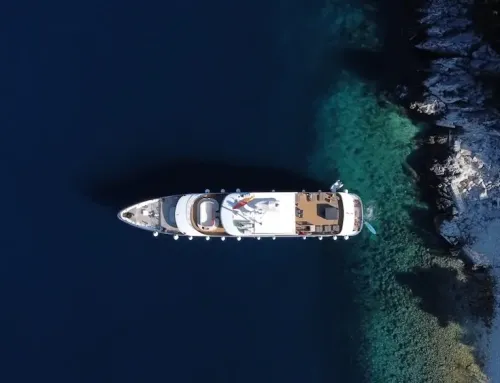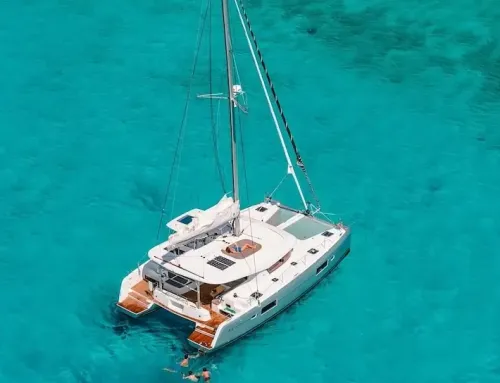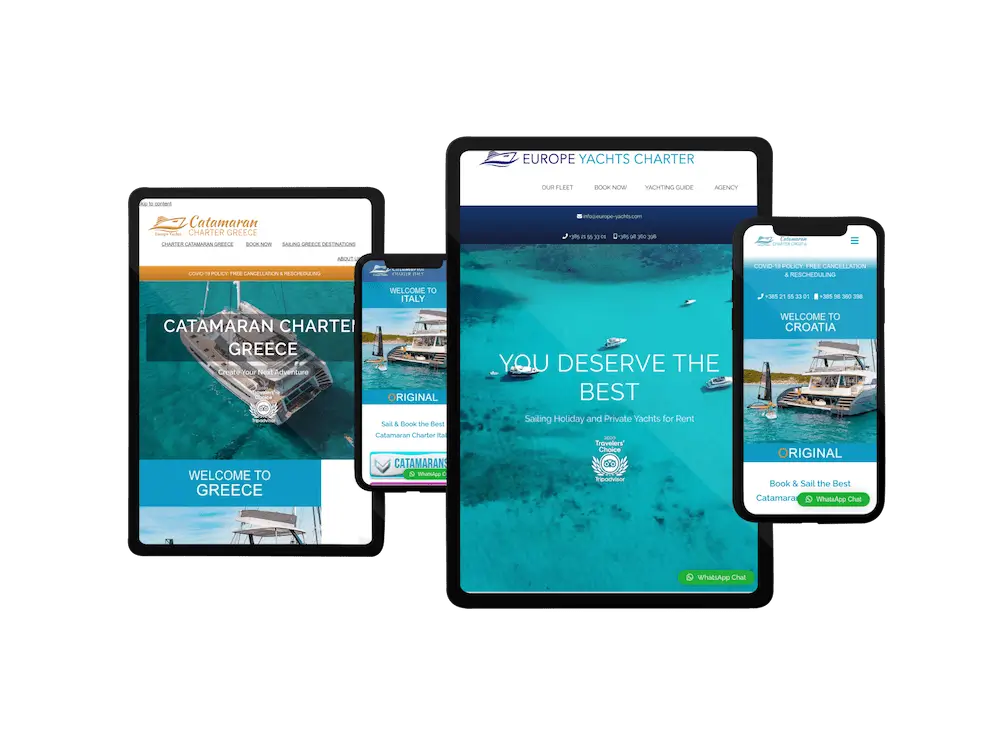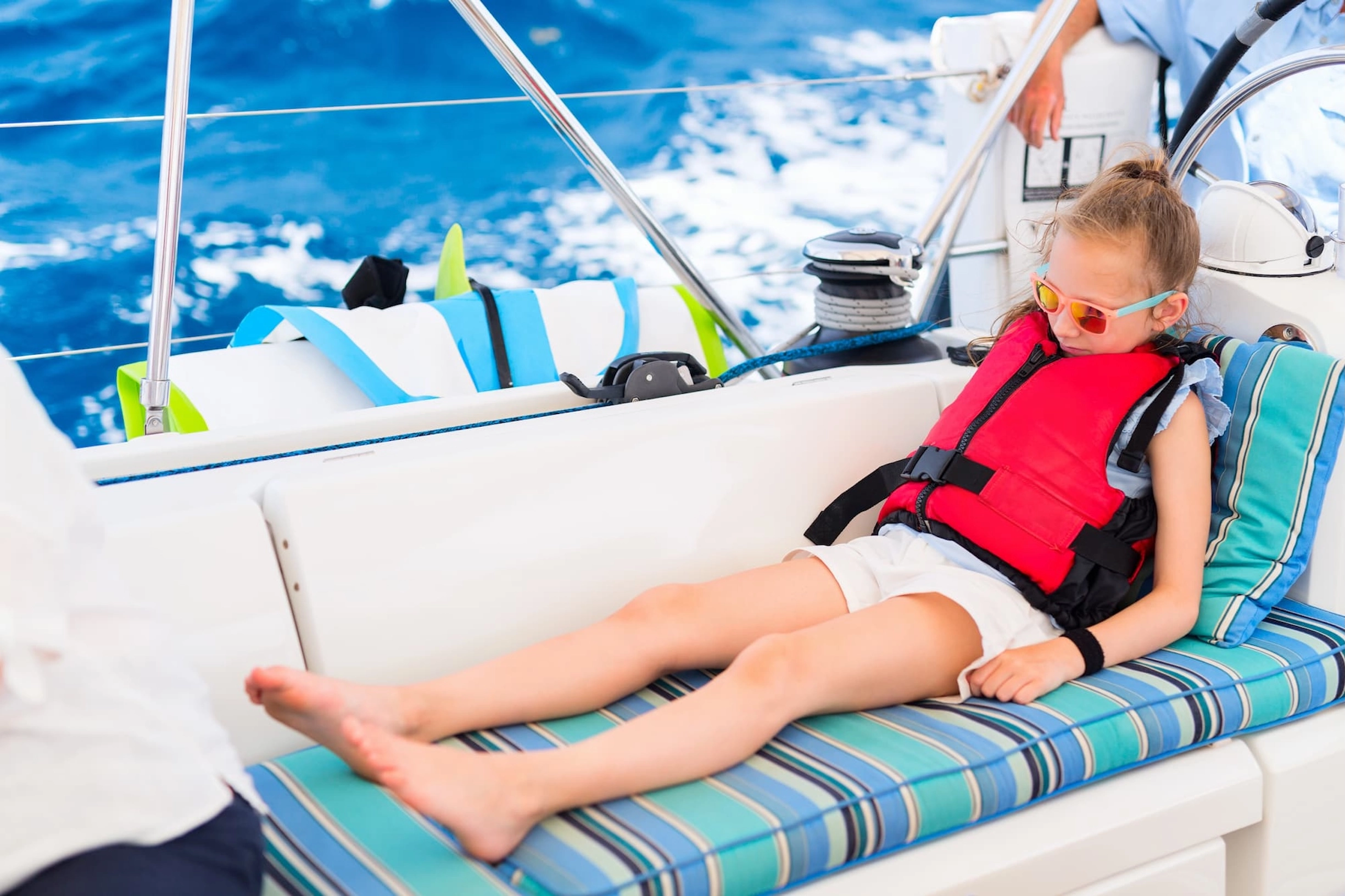
Are Life Jackets and Safety Equipment Provided on the Yacht?
Overview
One of the most important things to consider while organising a yachting trip is safety. For a safe and easy travel, make sure you have all the required safety gear, including life jackets. This thorough guide covers everything from whether life jackets and other safety gear are given on yachts to what extra gear you might need and the best ways to keep safe when sailing.
Section 1: An Overview of Yacht Safety Gear
The Fundamentals of Boat Safety
Safety is of the utmost importance when sailing a yacht, and it begins with knowing what basic safety gear is needed. The majority of boat charters, particularly those involving large yachts for charter, have the necessary safety equipment. But being aware of what to anticipate and what extras you might need will really help you be more prepared.
Do Life Jackets Come With Them?
Standard Life Jacket Supply
Most yachts, particularly those that are available for hire in Europe, come equipped with life jackets as standard equipment. All passengers on board must have access to these life jackets, which must meet safety requirements. Life jackets must be provided when chartering a vessel, regardless of size; this is a legal mandate. Businesses that rent yachts for lease make sure that the life jackets are readily available and in good working order.
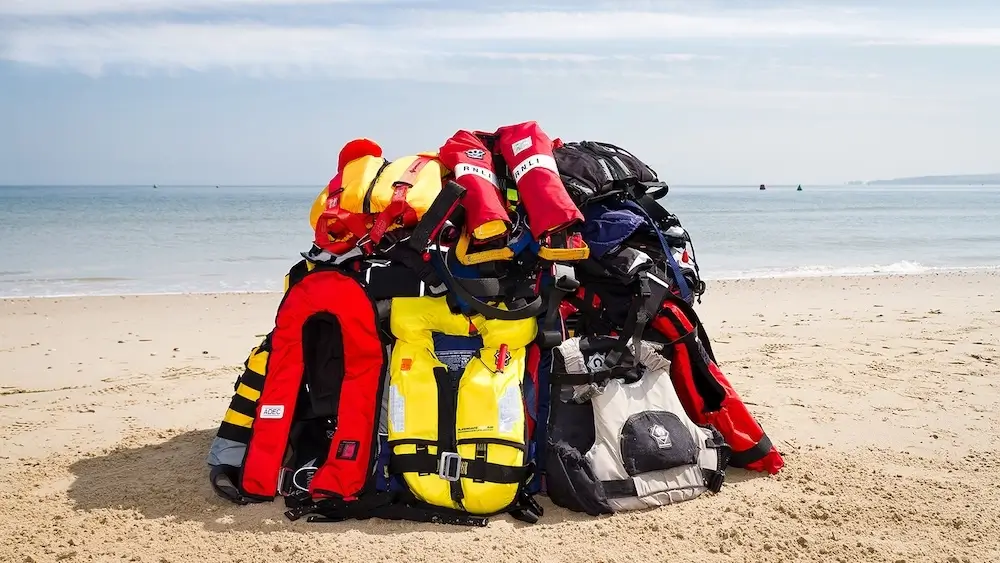
Life Jackets And Safety Equipment 2
Life Jacket Types
On a yacht, life jackets come in a variety of styles.
- Inflatable Life Jackets: Lightweight and cosy, inflatable life jackets can be manually inflated with a pull string or automatically inflated when they come into contact with water.
- Foam Life Jackets: Though heavier, foam life jackets offer sustained buoyancy without requiring activation.
- Specialized Life Jackets: To guarantee the protection of kids and animals on board, there are life jackets made especially for them.
What Does a Yacht Require for Equipment?
Crucial Safety Equipment
Apart from life jackets, yachts should have a number of other vital safety equipment:
- Life Rafts: In the event of an emergency evacuation, all passengers can fit onto these inflatable rafts.
- Fire Extinguishers: It’s important to have a minimum of one, if not more, readily available and in good operating order.
- First Aid Kit: To manage minor injuries and medical crises, a complete first aid kit should be on hand.
- Flares and Signals: In an emergency, visual and auditory cues, such flares and horns, are essential for informing other vessels or rescue personnel nearby.
- EPIRB (Emergency Position Indicating Radio Beacon): When activated, the EPIRB (Emergency Position Indicating Radio Beacon) sends a position signal and distress signal to emergency agencies.
Extra Gear That’s Recommended
Even if the necessities are frequently offered, extra equipment can improve comfort and safety:
- VHF Radio: Necessary for emergency services and other boaters to communicate.
- Navigation Lights: Necessary for nighttime sailing visibility.
- Radar Reflector: Improves the yacht’s radar system visibility to other vessels.
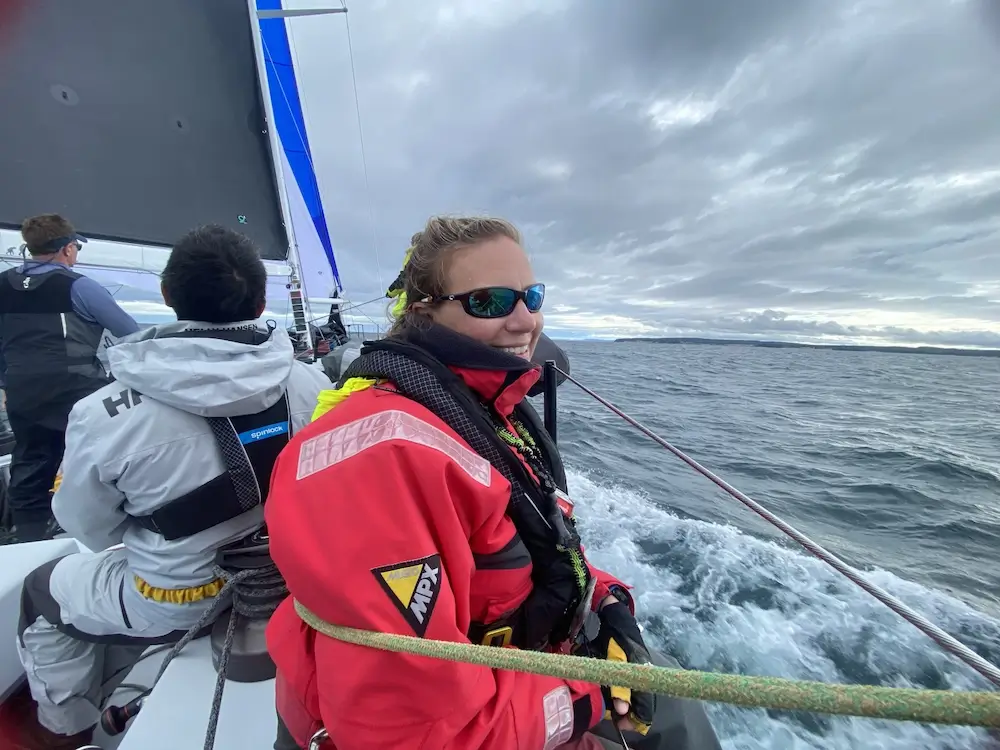
Life Jackets And Safety Equipment 3
The Charter Company’s Function
Maintaining Safety Requirements
Trustworthy charter firms, including those providing Europe yacht services, follow high safety guidelines. They guarantee adherence to maritime standards by routinely inspecting and maintaining all safety equipment. It is imperative that you verify with your charter company that the safety equipment is up to date and satisfies all requirements before you go sail.
Instructions and Briefings on Safety
Before leaving, the majority of charter businesses will give a safety briefing. This seminar addresses communication protocols, emergency procedures, and the placement and appropriate use of all safety equipment. It is essential that all passengers closely follow these guidelines.
What Kind of Emergency and Safety Gear Needs to Be Carried on Board?
Common Emergency Supplies
A clear inventory of emergency supplies ought to be carried by every yacht, comprising:
- Lifebuoys: Around the yacht are lifebuoys that can be quickly deployed in the event that someone falls overboard.
- Bilge Pumps: In the event of floods, manual or electric pumps are used to remove water.
- Harnesses and Tethers: Tethers and harnesses are used to tether guests to the boat and keep them from going overboard during inclement weather.
Tools for Communication and Navigation
Effective navigation and communication are also critical components of maritime safety:
- GPS Systems: Offer precise location and help with navigation.
- Chart Plotters: Plotters of charts: Assist in arranging and tracking the yacht’s course.
- AIS (Automatic Identification System): The Automatic Identification System (AIS) helps prevent collisions by tracking adjacent vessels.
The Value of Continual Inspections and Upkeep
Typical Inspections
It is essential to regularly inspect all safety equipment. This include making sure fire extinguishers are charged, checking the expiration dates on life jackets and flares, and confirming that all electronic equipment is in working order.
Upkeep Techniques
The following should be part of maintenance procedures:
- Cleaning and Inspecting Life Jackets: Life jackets should be regularly cleaned and inspected for signs of wear and tear.
- Servicing Life Rafts: Making sure they are packed and maintained in accordance with manufacturer specifications.
- Testing Communication Devices: Make sure that EPIRBs, VHF radios, and other electronic devices are regularly tested.
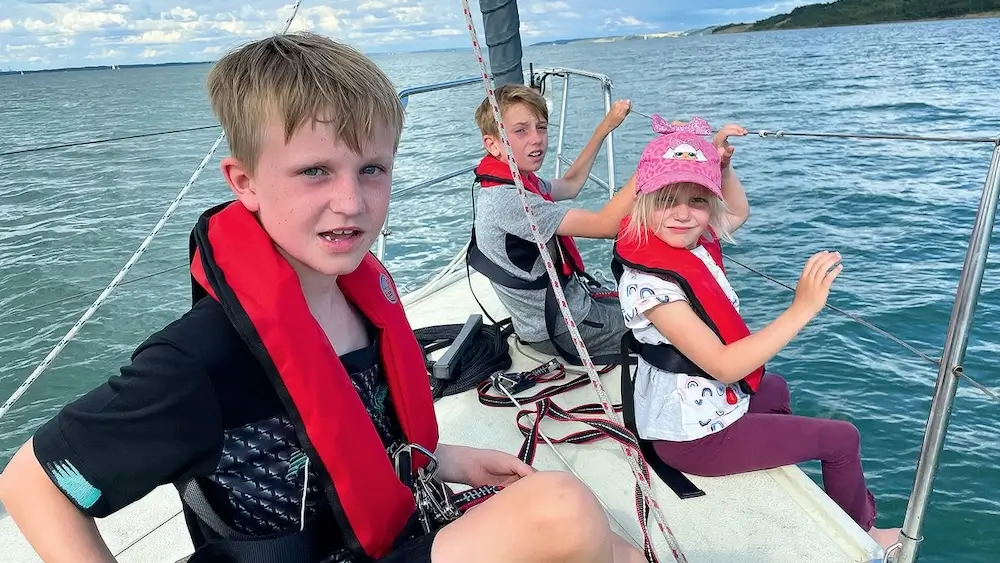
Life Jackets And Safety Equipment 4
Safety Procedures on Board
On a yacht, safety is greatly increased by following best practices and having the appropriate equipment, but it also helps to know how to operate it. The important onboard safety procedures that all sailors should adhere to are covered in this section.
Safety drills and briefings
Pre-trip Safety Information
A comprehensive safety briefing is required before to setting sail. This briefing ought to go over:
- Location of Safety Equipment: Make sure every passenger is aware of the locations of the first aid kits, fire extinguishers, and life jackets.
- Usage Instructions: Show off how to correctly use life jackets, life rafts, and other protective equipment.
- Emergency Procedures: Describe what to do in the event of a medical emergency, fire, or man overboard.
Putting Safety Drills in Place
Frequent safety exercises are essential, including fire evacuation and man overboard exercises. These exercises equip the passengers and crew to act swiftly and effectively in an emergency.
What Does a Ship’s Safety Equipment Entail?
Crucial Safety Gear
Several more items of equipment are essential for guaranteeing safety on a yacht in addition to life jackets. Here’s a thorough examination of what ought to be offered:
- Life Rafts: Most yachts are required to have life rafts, which give passengers a safe place to go if they have to evacuate the vessel. To guarantee their performance, routine maintenance and inspections are essential.
- Fire Extinguishers: There should always be at least one fire extinguisher available, and there should be more in strategic locations like the engine room and galley.
- First Aid Kits: Complete first aid packs ought to contain bandages, painkillers, antiseptics, seasickness medicines, and any prescription drugs that may be required.
Tools for Navigation and Communication
Tools for navigation and effective communication are essential for ensuring safety:
- VHF Radio: Coastal stations and other vessels can be reached with a VHF radio. Receiving weather updates and reporting emergencies both depend on it.
- GPS and Chart Plotters: These tools aid in precise and safe navigation by helping you stay on course and steer clear of obstacles.
- AIS (Automatic Identification System): The Automatic Identification System, or AIS, helps prevent collisions by detecting adjacent vessels and improving situational awareness.

Life Jackets And Safety Equipment 5
Extra Safety Equipment
Devices for Signalling and Flares
In order to draw attention and indicate distress, flares are necessary. Various kinds consist of:
- Red Handheld Flares: Good for usage at night and visible from a distance.
- Orange Smoke Signals: Can be seen from a distance and ascend to great heights.
- Parachute Rockets: A radio beacon that indicates the emergency position (EPIRB)
A radio beacon that indicates the emergency position (EPIRB)
An essential tool is an EPIRB, which when used, provides rescue agencies with your precise location by sending out a distress signal. In isolated locations, it is essential for emergencies.
Which Tools Are Necessary on a Yacht?
Instruments of Navigation
To ensure a safe journey when navigating a yacht, accurate instruments are necessary:
- Compass: An essential navigational tool that gives direction.
- Binoculars: A must for identifying far-off things and negotiating hazardous waters.
- Depth Sounder: A depth sounder can help you measure the water’s depth so you don’t run aground.
Tools for Weather Monitoring
At sea, the weather can change quickly. Tools for monitoring aid in anticipating and getting ready for these changes:
- Barometer: This device gauges atmospheric pressure and aids in weather forecasting.
- Anemometer: Essential for adjusting sails, this device measures wind direction and speed.
- Weather Radio: Offers current weather warnings and forecasts.
Procedures for Safety and Emergencies
Procedures for Man Overboard
In a circumstance where a man goes overboard, knowing how to respond swiftly and efficiently can save lives. Important actions consist of:
- Alert the Crew: Scream “Man Overboard” and keep pointing in the direction of the guy to alert the crew.
- Deploy Lifebuoy: Toss a lifebuoy to the person who is submerged in water to deploy it.
- Mark the Position: Mark the Location: Locate the location of the person’s overboard fall using a GPS device.
- Return to Pick Up: Gently manoeuvre the boat back towards the individual, making sure you always have a clear view of them.
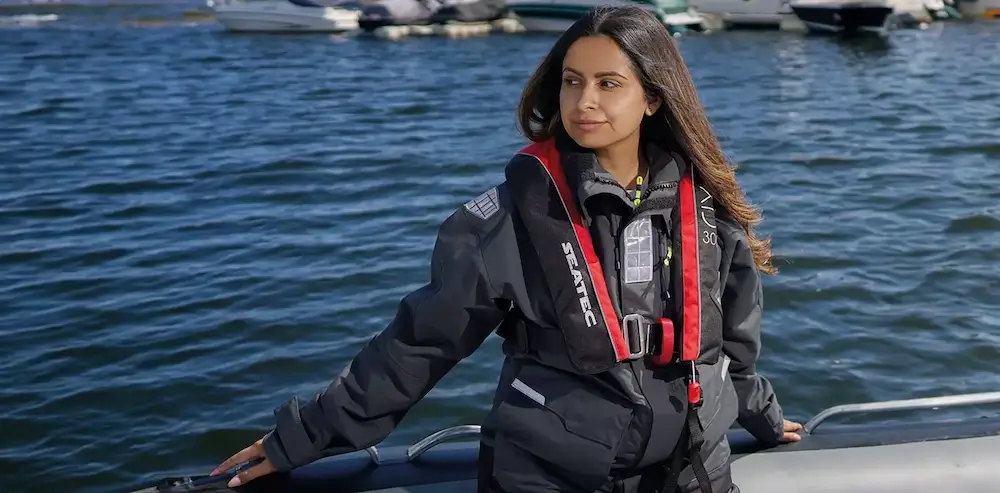
Life Jackets And Safety Equipment 6
Measures for Fire Safety
It’s critical to prevent and handle flames on board:
- Regular Inspections: Look for any potential risks in any fuel lines and electrical systems.
- Fire Blanket: To put out small fires, keep a fire blanket in the galley.
- Escape Routes: In the event of a fire, make sure every passenger knows the shortest routes out.
Upkeep of Safety Equipment
Standard Inspections
Make sure all safety equipment is in operational order by doing routine inspections:
- Life Jackets and Rafts: Make sure they are accessible and inspect them for wear or damage.
- Fire Extinguishers: Make sure that your fire extinguishers are completely charged and within their serviceable dates.
- First Aid Kits: Make sure to periodically replenish supplies and verify the expiration dates of prescriptions.
Maintenance and Swaps
Certain equipment needs to be serviced by professionals or replaced on a regular basis.
- EPIRB and Flares: Make sure you service EPIRBs and flares in accordance with the manufacturer’s instructions.
- VHF Radios and GPS Devices: GPS devices and VHF radios should be tested frequently to make sure they are operating properly.
- Life Rafts: To keep them in working order, adhere to servicing schedules.
What Kind of Emergency and Safety Gear Needs to Be Carried on Board?
Entire Safety Kits
In an emergency, a well-stocked safety pack can make a big difference:
- Rescue Knives: In times of need, readily available, sharp knives are essential for cutting ropes.
- Thermal Protective Aids: Suits or blankets to keep cold water hypothermia at bay.
- Manual Bilge Pump: Handy if the electric bilge pump breaks down: the manual bilge pump.
Managing Bad Weather
Though the weather in the Mediterranean is generally gorgeous, it may change quickly, so it’s important to be ready for bad weather if you’re sailing a yacht.
Keeping an eye on the weather
- Regular Updates: Use weather radios or apps to keep an eye on the latest weather predictions. Reliable marine weather updates are offered by services such as Navtex.
- Barometer and Anemometer: Utilise a barometer and an anemometer to track wind speed and air pressure, as these measurements can predict impending weather changes.
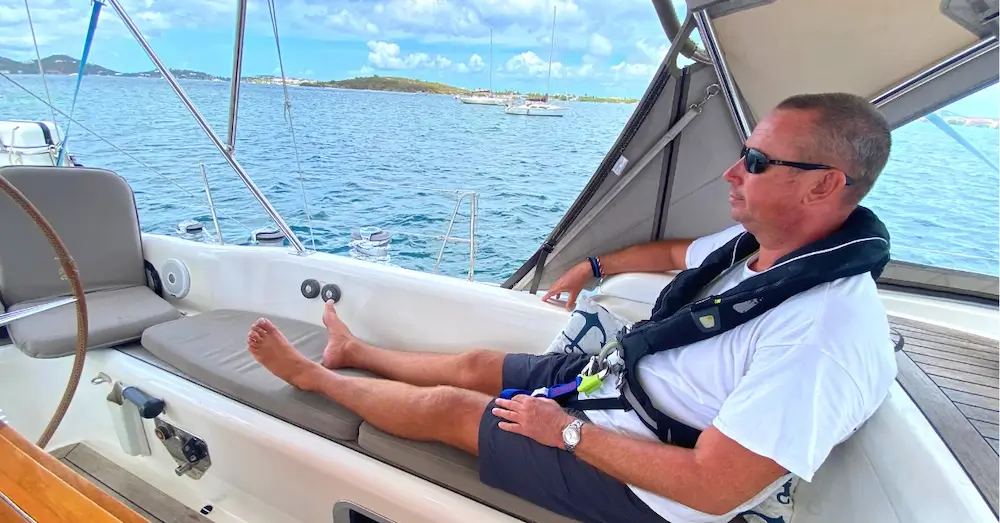
Life Jackets And Safety Equipment 7
Adapting to Changes in the Weather
- Reduce Sail Area: In order to keep control of the yacht, lower sail area if severe winds are predicted.
- Secure Loose Items: To keep them from becoming dangers, make sure that all loose things on deck and below are secured.
- Adjust Course: Modify your path to evade the most severe weather conditions, and take cover if required.
Maintaining Passenger Security
Educating Travellers
It’s crucial to brief every passenger on safety procedures and the locations of safety devices before you set sail. Important topics to discuss are as follows:
- Life Jackets: Make sure everyone has a fit life jacket by demonstrating how to put one on correctly.
- Emergency Exits: Point out the escape routes and emergency exits to other passengers.
- Communication Protocols: Stress the value of remaining composed and how to utilise the VHF radio in an emergency.
Kids and Animals
The safety of children and pets on board requires extra attention.
- Children: Make sure they always wear life jackets. Establish guidelines for remaining in the yacht’s safe zones.
- Pets: Provide a safe haven for them to spend in inclement weather and use life jackets designed specifically for them.
What Does a Yacht Require for Equipment?
A well-prepared yacht also needs a few more vital items of equipment in addition to the safety gear:
- Navigation Instruments: Binoculars, a GPS unit, and a compass are navigational aids for precise navigation.
- Anchoring Equipment: A sturdy anchor and enough rope or chain to hold the boat in place under all kinds of circumstances.
- Tool Kit: Essential instruments for small-scale upkeep and repairs.
Commonly Asked Questions
What Kind of Emergency and Safety Gear Needs to Be Carried on Board?
There should always be a full complement of safety and emergency gear on board, such as:
- Life Rafts: For last-minute escapes.
- Fire Extinguishers: There should be a fire extinguisher nearby in strategic locations.
- First Aid Kits: Completely supplied with essential materials.
- Flares and EPIRB: To indicate position and distress, use flares and an EPIRB.
What Does a Ship’s Safety Equipment Entail?
Every piece of gear required to safeguard both guests and crew is included in the yacht’s safety equipment. This includes:
- Life Jackets: Every passenger can have access to a life jacket.
- Fire Extinguishers: Several carefully positioned units.
- Emergency Signals: EPIRBs and flares to indicate a distress situation.
- Navigation and Communication Tools: GPS, AIS, and VHF radios are examples of navigation and communication tools.
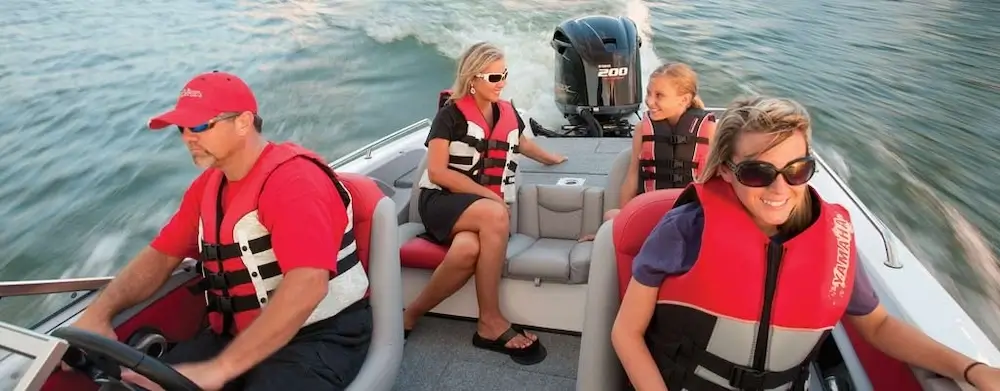
Life Jackets And Safety Equipment 8
Which Tools Are Necessary on a Yacht?
The following are necessary tools for safe yacht operation and navigation:
- Compass: For guidance in direction.
- GPS: For accurate route planning.
- Barometer and Anemometer: Used to track weather patterns.
- Depth Sounder: Avoid shallow seas by using the depth sounder.
Last Words on Safety
Continual Upkeep
It’s essential to keep your yacht and safety equipment maintained to make sure everything works as it should when needed:
- Life Jackets and Rafts: Life jackets and rafts should have regular wear and tear inspections.
- Fire Extinguishers: Make that fire extinguishers are still within their serviceable dates.
- Electronic Devices: Test GPS units, VHF radios, and other navigational aids on a regular basis.
Being Ready and Receiving Training
Being ready requires more than just having the appropriate tools; it also entails practice and training:
- Safety Drills: Hold frequent exercises for evacuation, fire, and man overboard protocols.
- First Aid Training: Knowing the basics of first aid in an emergency can be very helpful.
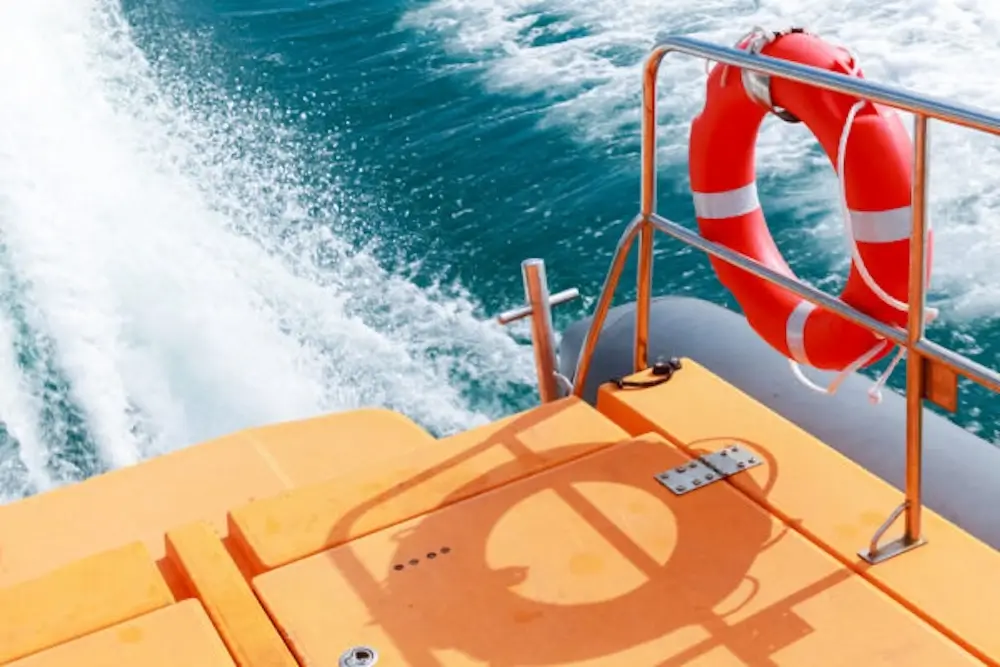
Life Jackets And Safety Equipment 9
Conclusion
The foundation of any good yachting experience is safety. You can guarantee a safe and enjoyable voyage by being aware of the safety gear offered on a boat, maintaining it appropriately, and knowing what to do in an emergency. From fundamental gear to cutting-edge safety procedures, this guide has covered it everything to give you with the knowledge you need to confidently traverse the Mediterranean seas.
About the Author: Europe Yachts Charter



